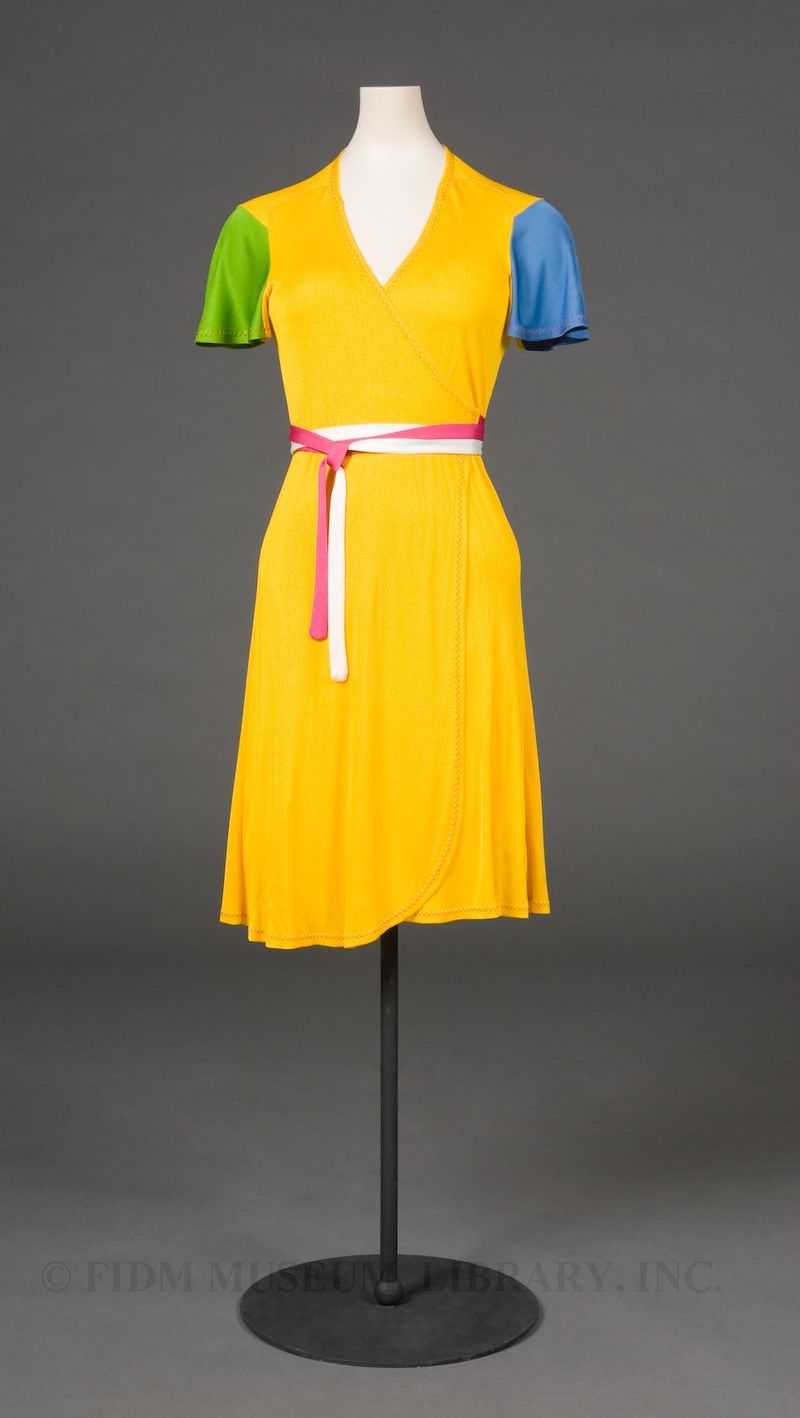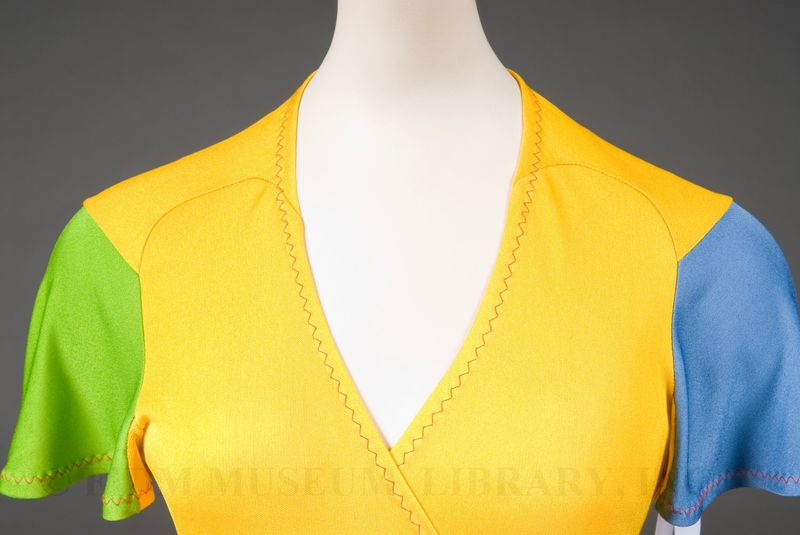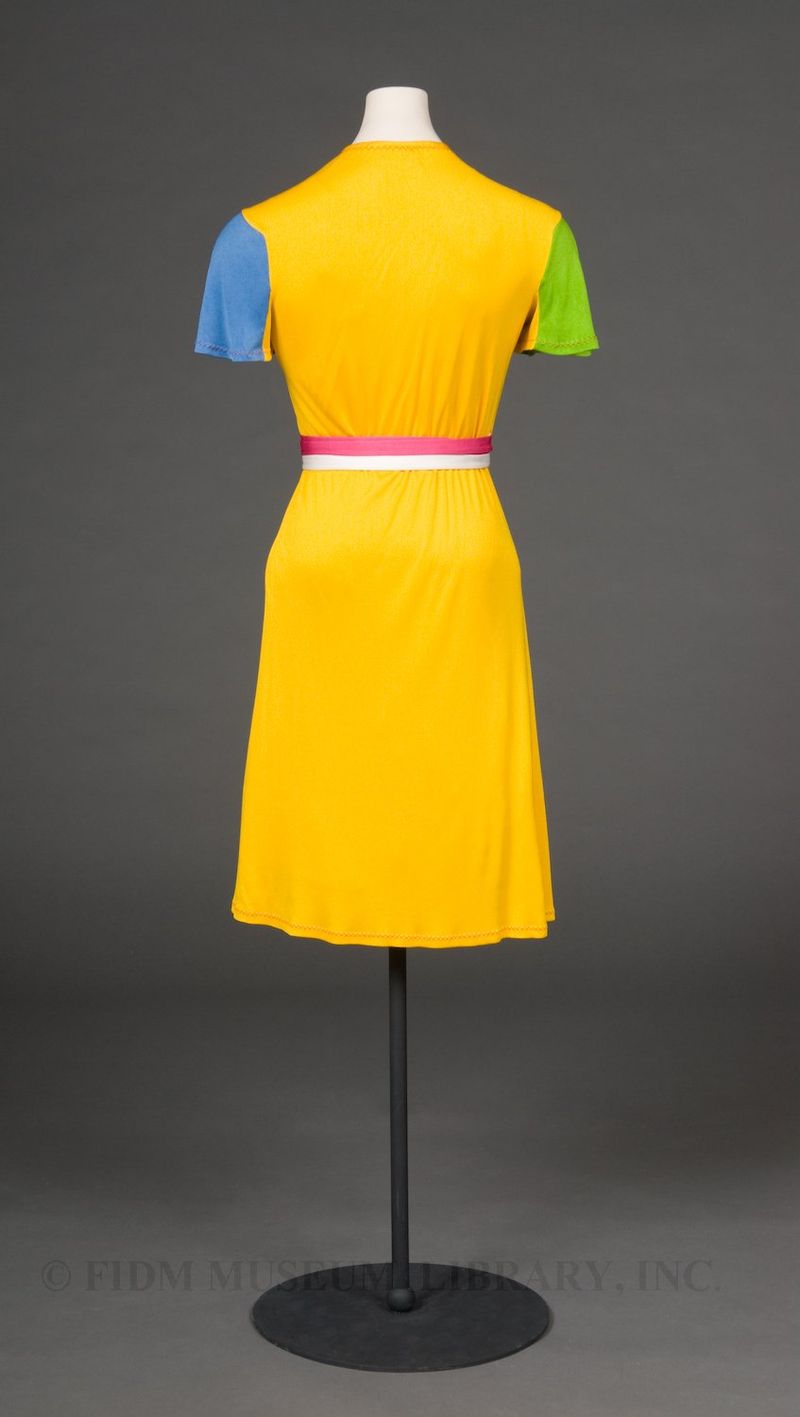Stephen Burrows’ first fashion show, held in 1970 at Henri Bendel in Manhattan, was accompanied by a disco soundtrack. In attendance were not only members of the fashion establishment, but also “hordes of boys and girls in brilliant plumage who looked as if they came from the nearest rock festival, only cleaner.”1 On show were garments of studded leather, form-fitting sweaters and dresses of a simple, fluid cut in a riot of colors. As one attendee noted, Burrows “has an absolute disregard for the established laws of color.”2
 Wrap dress
Wrap dress
Stephen Burrows
1970-71
Gift of Jo Holzman
2006.871.12
Brightly color-blocked garments of jersey and double-knit would become a hallmark of Burrows’ work, along with exposed seams and his famous “lettuce hem.” Diana Vreeland, then editor-in-chief of Vogue, reportedly asked for one of Burrows’ garments in “lettuce green.” Burrows interpreted this request in his own fashion, using a narrow zig-zag stitch to give the edge of his garments the appearance of a rippled lettuce leaf. The FIDM Museum jersey wrap dress seen here probably dates from before this famous interaction, as it not lettuced. You can, however, see visible zig-zag stitches on the bodice. This reminder of the sewing process imposes a sense of unaffected, yet confident ease as only a woman very sure of herself could wear a garment that hints at being unfinished. A confident customer was important to Burrows, who stated in 1977, “My customer has to know who she is. Or else she’s going to put my things on and say, ‘I can’t wear this! Everything’s showing!’ My customer wants to show it.”3
The disco soundtrack to Burrows’ first fashion show revealed his key influences: music and movement. Burrows was an active participant in the early 1970s disco-oriented New York club scene. Dance was simultaneously a favorite pastime and a major influence on his designs. Burrows believed that “dancing is always in my clothes…you can do anything and feel free in the garment.”4 This sense of freedom hints at the hedonistic culture of disco, which would soon move from the underground clubs of New York to cities across the country. The central elements of Burrows’ aesthetic, including bright colors, sinuous fit and an inherent sense of physical confidence and ease, would become important elements of disco fashion in the mid-to-late 1970s. In fact, Burrows’ aesthetic was so closely aligned with disco that the two declined simultaneously, with both falling out of fashion by about 1980.
1 Morris, Bernadine. “The Look of Fashions for the Seventies in Colors That Dazzle.” New York Times 12 Aug. 1970: p. 44.
2 Ibid.
3 Butler, Jean. “Fashion.” New York Times 5 June 1977: SM35.
4 Ibid.




“Absolute disregard for the established laws of color”? Bah! The only reason you learn the rules is so you know how to properly break them later. I believe that there really is a difference in the work produced by people who know the rules and bend, break or ignore them, and people who never knew the rules in the first place.
Needless to say, I absolutely love the bold colors and styling of this dress. Designers who aren’t afraid to get in your face with color have a special place in my heart.
This color combination is actually tame compared to some other garments by Burrows! Another Stephen Burrows ensemble in our collection features a pieced skirt and top of black, pink, purple, blue, red, yellow, orange and maroon in a swirling pattern. After revealing its existence in this comment, I should probably post it sometime soon!
Ooooh… If you can, please do! The crazier the better!